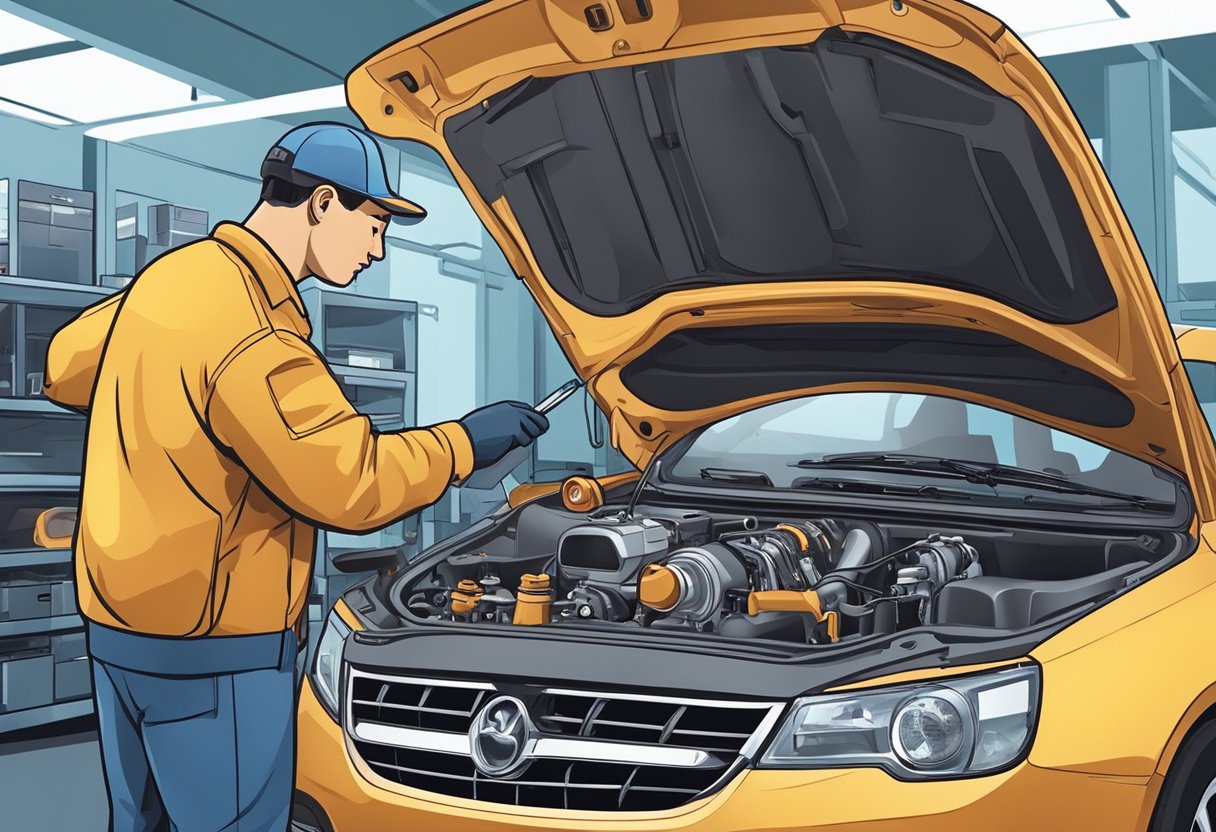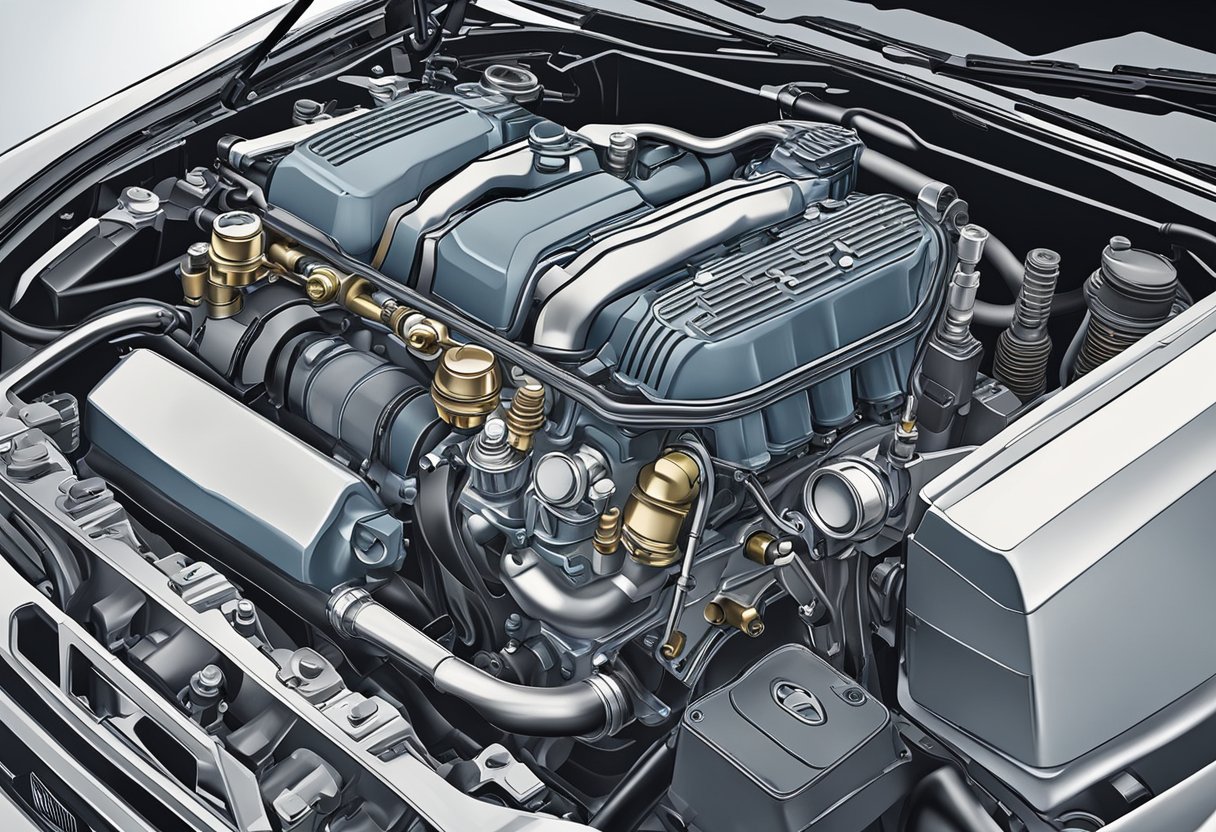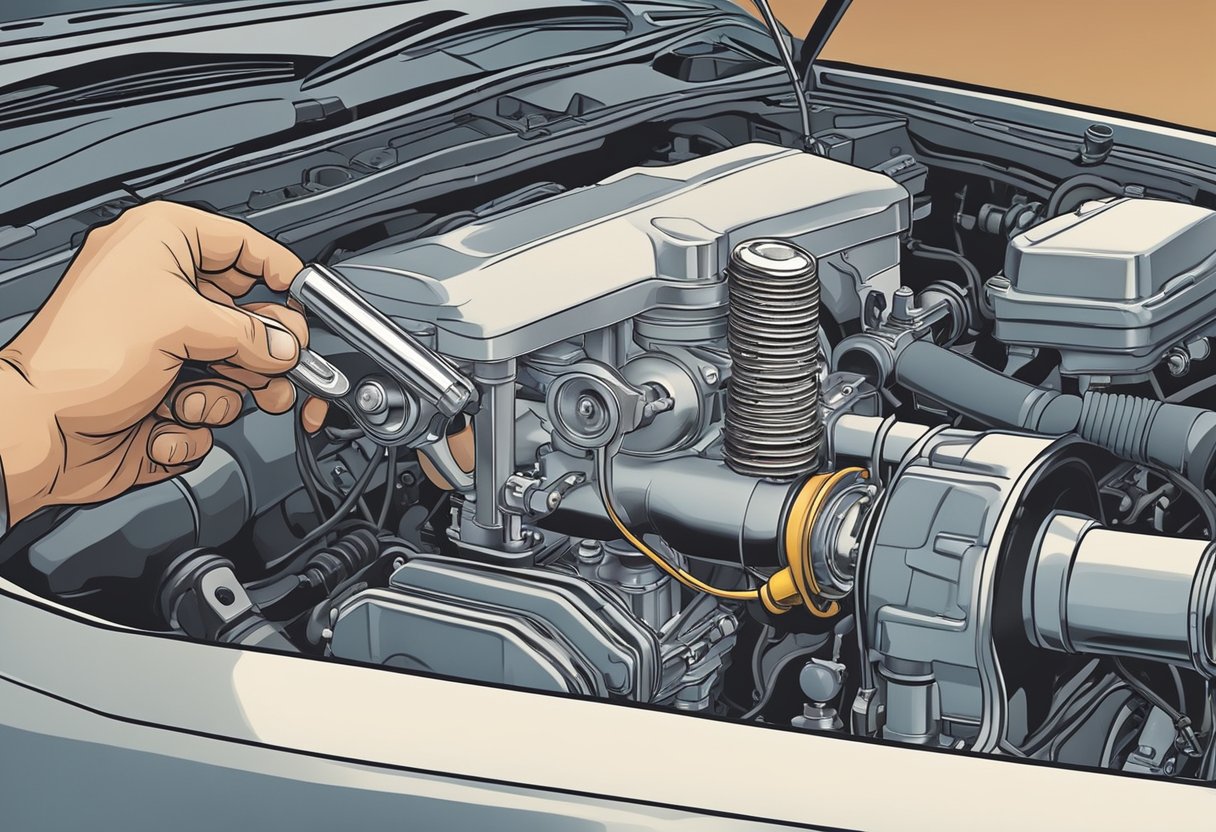If you’re experiencing a rough idle or your engine is stalling, it could be a sign of a faulty idle air control valve.
This small but important component plays a crucial role in regulating the air flow into your engine, which in turn affects the engine’s idle speed.
If you suspect your idle air control valve is malfunctioning, it’s important to identify and fix the issue quickly to avoid further damage to your engine.
One of the most common symptoms of a bad idle air control valve is a rough or unstable idle.
You may notice that your engine is running erratically, with the RPMs fluctuating up and down, or that it’s stalling out completely.
Other signs of a faulty idle air control valve include poor fuel economy, reduced engine performance, and even a check engine light on your dashboard.
Fortunately, with the right tools and some basic knowledge, it’s possible to diagnose and fix a bad idle air control valve on your own.
Understanding the Idle Air Control Valve
If you’re experiencing problems with your car’s idle speed, it could be due to a faulty Idle Air Control (IAC) valve.
This valve is responsible for regulating the amount of air that enters your car’s engine when it’s idling.
In this section, we’ll discuss the function and importance of the IAC valve and common failures and causes that can lead to a bad IAC valve.
Function and Importance
The IAC valve is a small component that plays a critical role in your car’s engine performance.
Its primary function is to regulate the air that enters the engine when the throttle is closed.
When you’re driving, the throttle opens and closes to regulate the amount of air that enters the engine.
However, when you’re idling, the throttle is closed, and the IAC valve takes over to regulate the air.
Without a functioning IAC valve, your car’s engine would not be able to maintain a stable idle speed.
This could lead to stalling, rough idling, and poor engine performance.
Additionally, a bad IAC valve can cause your car to fail emissions tests, which could result in fines or other penalties.
Common Failures and Causes
There are several common failures and causes that can lead to a bad IAC valve.
Some of these include:
-
Carbon buildup: Over time, carbon can build up on the IAC valve, causing it to stick or malfunction.
-
Electrical problems: The IAC valve relies on electrical signals to function properly.
If there’s an issue with the wiring or connections, the valve may not work correctly.
-
Mechanical failure: The IAC valve is a mechanical component that can wear out over time.
If the valve becomes worn or damaged, it may not function correctly.
-
Vacuum leaks: A vacuum leak can cause your car’s engine to run lean, which can lead to a rough idle and other performance issues.
If you’re experiencing problems with your car’s idle speed, it’s essential to have your IAC valve checked by a qualified mechanic.
They can diagnose the issue and make any necessary repairs or replacements to get your car running smoothly again.
Symptoms of a Faulty Idle Air Control Valve
If you are experiencing problems with your car’s idle, it could be due to a faulty idle air control valve (IACV).
Here are some symptoms that may indicate a problem with your IACV:
Irregular Idle Speed
One of the most common symptoms of a bad IACV is an irregular idle speed.
If your car’s idle speed is fluctuating or seems too high or too low, it could be due to a faulty IACV.
You may notice that your car is idling roughly or that the engine is revving up and down on its own.
Engine Stalling
Another symptom of a bad IACV is engine stalling.
If your car stalls while idling or when you come to a stop, it could be due to a faulty IACV.
This is because the IACV is responsible for regulating the engine’s idle speed, and if it’s not working properly, the engine may stall.
Check Engine Light Activation
If your car’s check engine light is on, it could be due to a faulty IACV.
The IACV is monitored by the car’s onboard computer, and if it detects a problem with the valve, it will turn on the check engine light.
This is a clear indication that there is a problem with your IACV that needs to be addressed.
In summary, if you are experiencing irregular idle speed, engine stalling, or check engine light activation, it could be due to a faulty IACV.
It’s important to have your car inspected by a qualified mechanic to diagnose and fix the problem.
What Are the Symptoms of a Bad Idle Air Control Valve and How Can I Fix Lower Idle RPM Issues with the P0506 Code?
When it comes to fixing low idle RPM issues, one common culprit is a bad idle air control valve. Symptoms may include stalling, irregular idle, or the check engine light with a P0506 code. To fix this issue, you may need to clean or replace the idle air control valve to restore proper engine idle.
Diagnosing a Bad Idle Air Control Valve
If you’re experiencing rough idling or stalling in your vehicle, it could be due to a faulty Idle Air Control (IAC) valve.
Here are a few ways to diagnose a bad IAC valve:
Visual Inspection
Before you begin any diagnostic procedure, it’s important to visually inspect the IAC valve.
Check for any signs of damage, corrosion, or buildup that could be affecting its performance.
If the valve appears to be in good condition, move on to the next diagnostic step.
Diagnostic Trouble Codes
If your vehicle has an onboard diagnostic system (OBD), you can use it to check for any trouble codes related to the IAC valve.
Connect a scan tool to the OBD port and check for any codes related to the IAC valve.
If there are any codes present, it’s likely that the IAC valve is faulty.
Manual Testing Procedure
If you don’t have access to an OBD system, you can manually test the IAC valve.
Start by disconnecting the electrical connector from the valve.
Use a multimeter to check the resistance across the valve’s terminals.
The resistance should be within the manufacturer’s specified range.
If it’s not, the valve is faulty and needs to be replaced.
Next, use a vacuum pump to apply vacuum to the valve.
Monitor the valve’s movement as you apply and release the vacuum.
The valve should move smoothly and without any hesitation.
If it doesn’t, the valve is faulty and needs to be replaced.
In conclusion, diagnosing a bad IAC valve requires a visual inspection, checking for diagnostic trouble codes, and performing a manual testing procedure.
If you suspect that your IAC valve is faulty, it’s important to replace it as soon as possible to prevent further damage to your vehicle.
Can a Bad Idle Air Control Valve Cause Issues with a Key Fob Battery?
Yes, a bad idle air control valve can cause issues with a key fob battery. If the valve fails, it can make the engine idle too low, causing the battery to drain more quickly. These dead key fob battery symptoms can be a sign of a larger issue with the car’s system.
Fixing the Idle Air Control Valve
If you have determined that your idle air control valve (IAC) is the culprit behind your car’s rough idling, there are several things you can do to fix the issue.
Here are three possible solutions to try:
Cleaning the IAC Valve
Sometimes, a dirty IAC valve can cause it to malfunction.
Cleaning it can help restore its function.
Here are the steps to follow:
- Remove the IAC valve from the engine.
- Use a cleaning agent to remove any dirt or grime from the valve.
- Wipe the valve clean with a rag.
- Reinstall the valve and test your car’s idle.
Adjusting the IAC Valve
If cleaning the valve doesn’t work, you can try adjusting it.
Here’s how:
- Locate the IAC valve on your engine.
- Loosen the screws that hold the valve in place.
- Adjust the valve until it is in the correct position.
- Tighten the screws and test your car’s idle.
Replacing the IAC Valve
If cleaning or adjusting the valve doesn’t work, it may be time to replace it.
Here are the steps to follow:
- Purchase a new IAC valve that is compatible with your car’s make and model.
- Locate the old IAC valve on your engine and remove it.
- Install the new IAC valve in its place.
- Test your car’s idle to ensure the new valve is working properly.
By following these steps, you can fix a bad idle air control valve and get your car running smoothly again.
Preventive Maintenance and Tips
To prevent your idle air control valve from going bad, it is important to perform regular maintenance on your vehicle.
Here are some tips to help you keep your idle air control valve in good condition:
- Clean your throttle body regularly to prevent buildup of dirt and debris that can affect the performance of your idle air control valve.
- Replace your air filter at recommended intervals to ensure proper airflow to your engine, which can help prevent your idle air control valve from working too hard.
- Check your vacuum hoses for leaks and replace them if necessary.
Leaks in your vacuum system can cause your idle air control valve to malfunction.
- Use high-quality fuel and oil to keep your engine running smoothly and reduce the risk of buildup on your idle air control valve.
In addition to regular maintenance, there are a few things you can do to help prevent your idle air control valve from going bad:
- Avoid idling your engine for long periods of time, as this can cause your idle air control valve to work too hard.
- Drive your vehicle regularly to keep your engine and idle air control valve in good condition.
- If you notice any symptoms of a bad idle air control valve, such as rough idle or stalling, have it checked and replaced if necessary.
By following these tips, you can help prevent your idle air control valve from going bad and keep your engine running smoothly.
As an Amazon Associate we earn from qualifying purchases.














